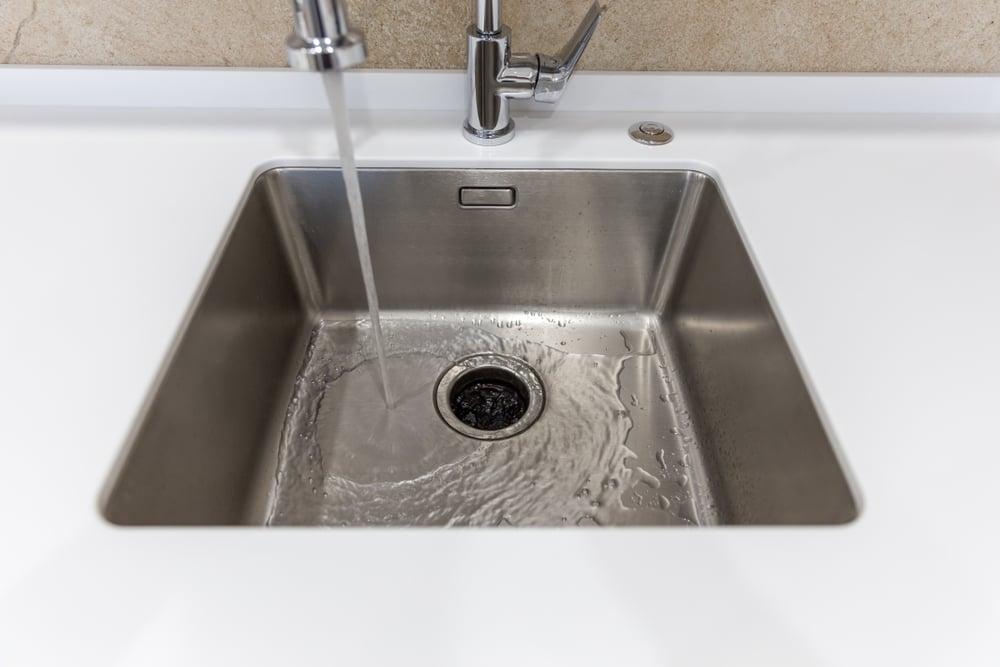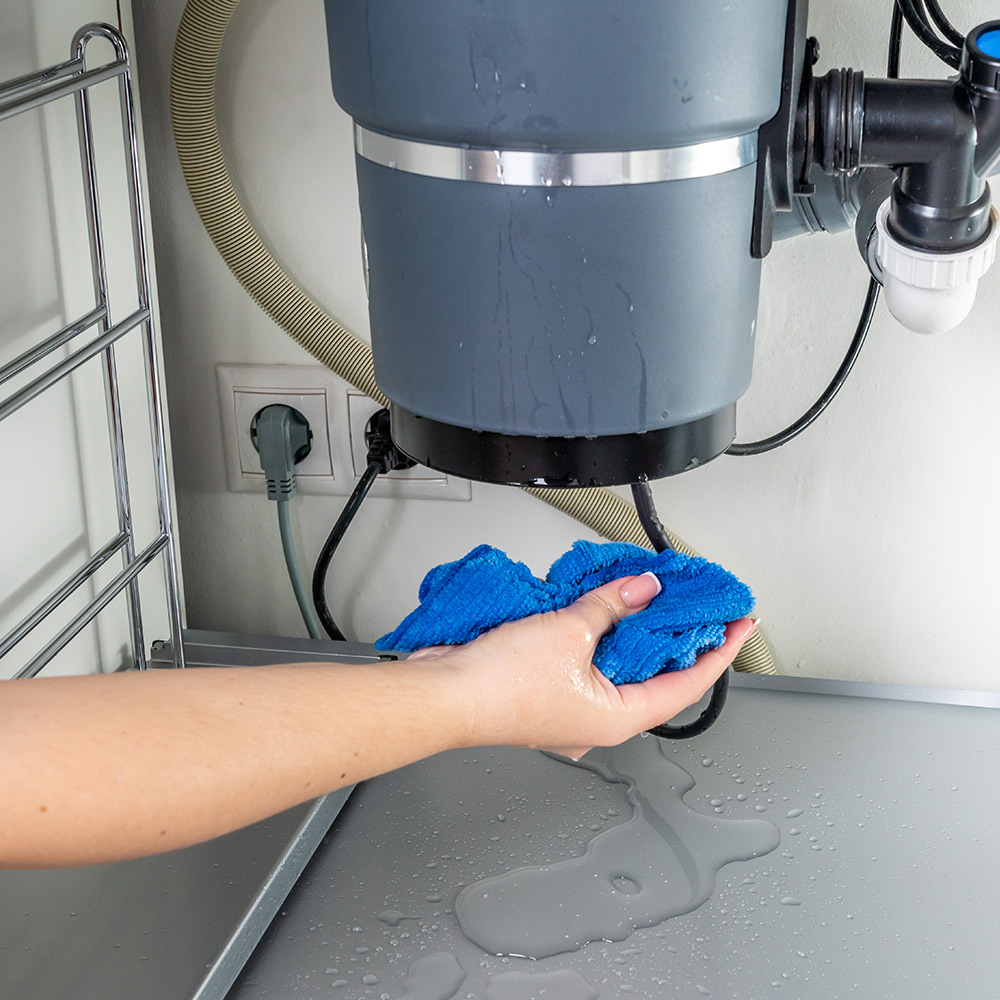Recommended Methods for Resolving a Leak in Your Garbage Disposal
Recommended Methods for Resolving a Leak in Your Garbage Disposal
Blog Article
This post which follows pertaining to Garbage Disposal Leaking From Bottom is immensely entertaining. You should investigate it.

Garbage disposals are crucial cooking area home appliances that assist in dealing with food waste successfully. However, a dripping garbage disposal can be an irritating and unpleasant trouble to deal with. Luckily, several leakages can be fixed easily with a couple of easy actions. In this article, we will certainly talk about just how to fix a dripping waste disposal unit successfully.
Intro
Garbage disposals are set up under kitchen sinks and are made to shred food waste right into smaller pieces, permitting it to go through the pipes system easily. While these gadgets are typically dependable, leaks can take place over time because of deterioration, loosened connections, or damage to the device.
Typical Sources Of Leaks in Rubbish Disposals
Worn Seals and Gaskets
Seals and gaskets play an important role in protecting against water from dripping out of the waste disposal unit. With time, these components can wear away, causing leaks around the disposal unit.
Loose Connections
The links between the waste disposal unit and the plumbing system can become loose in time, creating water to leak out during operation.
Cracks or Holes in the Disposal System
Physical damages to the garbage disposal, such as fractures or holes in the housing, can also lead to leakages.
Recognizing the Source of the Leak
Before trying to deal with a dripping garbage disposal, it is important to identify the resource of the leakage. This can usually be done via aesthetic assessment or by carrying out straightforward examinations.
Visual Inspection
Evaluate the waste disposal unit device thoroughly for any type of indicators of water leakage. Pay very close attention to areas around seals, gaskets, and connection points.
Examining for Leakages
One method to evaluate for leakages is by running water through the disposal system and checking for any visible indications of leakage.
Devices and Materials Needed for Dealing With a Leaking Waste Disposal Unit
Prior to beginning the repair service process, collect the necessary tools and materials, consisting of a screwdriver, flexible wrench, plumbing's putty, replacement seals or gaskets, and epoxy or patching product for fixing cracks or openings.
Step-by-Step Overview to Dealing With a Leaking Garbage Disposal
Switch off the Power
Prior to trying any kind of fixings, guarantee that the power to the garbage disposal system is turned off to avoid the risk of electric shock.
Locate the Leak
Recognize the specific location of the leak and establish the reason.
Tighten Connections
Use a wrench to tighten up any kind of loosened links in between the disposal unit and the pipes system.
Change Seals or Gaskets
If the leakage is due to worn seals or gaskets, eliminate the old components and replace them with brand-new ones.
Patching Cracks or Openings
For fractures or holes in the disposal unit, use epoxy or a suitable patching material to seal the broken location.
Testing the Waste Disposal Unit After Fixing
Once the fixing is full, evaluate the garbage disposal by running water via it to make certain that the leakage has been dealt with.
Preventive Upkeep Tips to Stay Clear Of Future Leakages
To stop future leakages, it is vital to perform regular upkeep on your waste disposal unit. This includes maintaining it tidy, preventing putting non-food items or hard items down the disposal, and occasionally checking for leakages or other issues.
Final thought
To conclude, dealing with a dripping garbage disposal is a reasonably straightforward procedure that can be completed with fundamental devices and materials. By adhering to the steps laid out in this article and practicing preventive upkeep, you can maintain your garbage disposal in good working problem and stay clear of expensive repairs in the future.
What to Do About a Leaking Garbage Disposal
A leaking garbage disposal often goes unnoticed until you confront a sopping cabinet, a foul-smelling puddle, or an audible drip-drip-drip from the unit. The fix can be frustrating, too, because the leak can stem from a number of components in the system. Fortunately, with a little sleuthing, you can zero in on the leak and—depending on the exact location—stop the icky oozing and repair the component that caused it. Worst case scenario, if it turns out that the garbage disposal must be replaced, installing a new one is a reasonable do-it-yourself task for those with basic plumbing skills. Read on to keep the cash you’d otherwise hand over to a pro.
Prepare to find the leak
Prior to testing the garbage disposal for leaks, unplug it at the wall outlet and turn off the power from the breaker box to prevent electrical shock. Then insert a watertight sink stopper into your sink drain and wipe the unit dry with a clean cloth. In any handy container, mix a few drops of food coloring into a few cups of water, and pour the dyed water onto the sink stopper to help you locate the leak.
Investigate the source
the top, where the disposal meets the sink drain the side, where the dishwasher hose or main drain pipe connects to the disposal or the bottom of the unit Inspect each of these locations while gliding a light-colored rag over the unit; the dyed water will readily show on the rag and reveal the location of the leak. If a leak isn’t immediately apparent, remove the sink stopper and pour a few more cups of dyed water down the sink drain, then check for leaks again. Leaks near the top of the unit are more likely to show themselves while the sink is plugged, while side and bottom leaks are more noticeable while the sink is unplugged.
The metal sink flange that sits directly inside the sink drain is typically sealed around the top with plumber’s putty (a clay-like sealant) and then secured from under the sink with bolts. If the plumber’s putty deteriorates, or the bolts loosen, the flange can no longer form a watertight seal between the sink drain and the disposal—which could cause a leak at the top of the unit.
To reseal the leaky flange, you must first detach the garbage disposal. Start by loosening the screws securing the main drain pipe to the disposal, then loosen the screws in the metal clamp securing the dishwasher hose to the disposal and detach the drain pipe and dishwasher hose from the disposal. Loosen the screws in the mounting ring that connects the disposal to the metal mounting assembly beneath the sink, then pull down the disposal and carefully set it on a clean, dry surface. Loosen the bolts in the mounting assembly with a wrench, then pull down the mounting assembly and set it near the disposal.

As a serious reader about Why Is , I assumed sharing that excerpt was really helpful. Kindly take a moment to distribute this content if you enjoyed it. Many thanks for your time. Come back soon.
Click Here Report this page